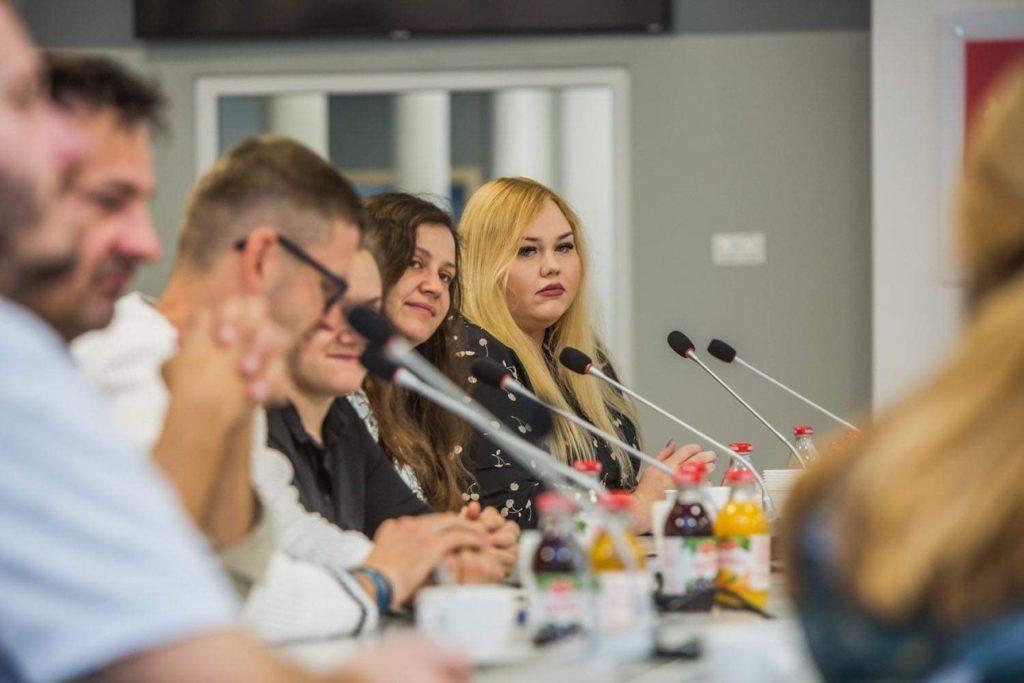Milena Kowalska was the youngest councillor in Poland when she was first elected to her local municipal government at the age of 21. Nine years later, she remains the youngest in the nation.
She sees her early and unexpected success as part of a broader “pro-citizen” trend towards grass-roots democracy that has been gaining strength for quite some time across the country, especially at the municipal level. Among other things, the movement has seen the widespread adoption of participatory budgets (PBs) in Poland. As Kowalska explains, this gives people a chance to “make some changes in local government,” and a way for the city to “give activists more of a feeling that they can decide and that they have some impact.”
Although it’s increasingly common in Europe and around the world, it’s worth recalling that participatory budgeting is a relatively new idea, in terms of formal political practice. Originating in the Brazilian city of Porto Alegre, where it has been practised since 1989, the process has radical provenance. Porto Alegre is also famous for being home to the World Social Forum – a major gathering of the global left.
But in Poland, they are more like the new normal. Since they were first introduced to the country in 2011 in the coastal town of Sopot, they have grown exponentially.
Poland mandates Participatory Budgets in large cities
Since January of 2018, Poland’s 66 top-tier cities, also known as “cities with county rights,” have been required by federal law to have a participatory budgeting process equivalent to no less than 0.5% of the overall city budget.
But it has equally become increasingly popular in smaller cities, like Ostrów Wielkopolski, the town of 71,000 people where Kowalska serves as councillor. In 2022, 43.5% of municipalities with a population greater than 5,000 ran a process, a 1% increase on the year before, despite difficult economic conditions caused by the war in neighbouring Ukraine.
Some municipalities exceed the minimum of 0.5% of the total budget significantly, but Kowalska hasn’t heard of it going above 2%. With thousands of participating municipalities, though, this adds up to a significant sum – 630.5 million Polish Zloty, or about 136.7 million Euro.
Mobilising voters for PBs
Voting happens online and in person. It is up to those proposing a budgetary item or “task” to lay out their plan and the costs involved – often with help from council staff – and then mobilise voters in favour of it. The campaigns which succeed are often those with the best ground game. “The entire procedure activates the residents and builds bonds between them as they compete to win,” Kowalska says. The process culminates in an annual gala where the winning projects are announced.
She adds: “there are certain risks, sometimes the participatory budget implements tasks that should be included in the budget independently.” She gives the example of projects centred around city-run public schools. The schools are extremely effective at mobilising parents and the surrounding community, and can dominate the process, giving smaller projects, without an equivalent institutional anchor, less chance to succeed.
These items, she explains, should really be included in the council’s general budget, leaving the participation funds for other projects. In practice, this is often the case – with a project to expand a school’s facilities, for example – originating in the participatory process, then finding its way into the mainstream budgetary process.
Creating a level playing field
As Kowalska explains, the fact that schools are financed by local governments creates “a distortion in terms of equal opportunities for tasks submitted by ordinary citizens,” vs those submitted by a school principal, who has a full time job advocating for the school’s interests.
The main point is that if a school wants to build, for example, a playground on its premises, it is unrivaled compared to the tasks of ordinary citizens. It has great organisational capabilities because it will mobilise parents to vote and will always win over an ordinary neighbourhood task. Therefore, in my opinion, there is a high risk that participatory budgeting will be dominated by people from institutions.
Rather than exclude schools entirely, though, she and her colleagues have chosen to create a subcategory, equivalent to about 20% of the total pool of funds, just for educational projects. A further 20% is put aside for “green” or “revitalisation” themed projects.
The general category is also divided according to scope, into “large city-wide” and “small city-wide,” with “large” projects being eligible for a maximum of 50% of the total funding pool and “small” projects for a maximum of 20%.
Successful projects funded by PB
So far, successful projects in Ostrów Wielkopolski have included parks and outdoor exercise equipment. In Warsaw, a free-to-the-public ice rink won. Also in Warsaw, a project costing PLN 6 million (1.3 million euros) was approved with the goal of planting 2,137 new trees.
Kowalska explains: “The number 2,137 is quite symbolic because it is the hour of death of the Polish Pope John Paul II, which is an important religious symbol for many, but also the subject of jokes and memes.”
There have been problems – for example ongoing costs for the Warsaw Ice rink have proven to be a difficulty for the Polish municipality – leading to increasing pressure for city councils to make sure projects are properly budgeted, including their costs going forward before voting takes place.
These minor issues, though, stand out as exceptions in what is otherwise a successful experiment in opening the political process to the community at large.
